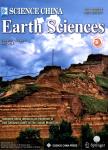Variation of karst spring discharge in the recent five decades as an indicator of global climate change: A case study at Shanxi, northern China
Variation of karst spring discharge in the recent five decades as an indicator of global climate change: A case study at Shanxi, northern China作者机构:School of Environmental Studies China University of Geosciences Wuhan China Office of Water Resource Management of Shanxi Province Taiyuan China
出 版 物:《Science China Earth Sciences》 (中国科学(地球科学英文版))
年 卷 期:2005年第48卷第11期
页 面:2001-2010页
核心收录:
学科分类:09[农学] 0903[农学-农业资源与环境]
基 金:This work was jointly supported by the National Natural Science Foundat ion of China(Grant No.40425001) the Teaching and Research Award Program for Outstanding Young Teachers in Higher Education Institutions of Ministry of Education,China
主 题:karst, Shanxi, spring discharge, attenuation, climate, human activity, global change
摘 要:Karst in Shanxi Province is representative of that in northern China, and karst water systems discharge in the form of springs that are among the most important sources for local water supply. Since the 1950s, attenuation has been the major trend of discharge variation of most karst springs at Shanxi. Based on the case study of 7 karst springs including Niangziguan, Xin’an, Guozhuang, Shentou, Jinci, Lancun, and Hongshan springs, the discharge variation process of karst springs was divided into natural fluctuation phase and anthropogenic impact phase. Discharge attenuation of the 7 karst springs was controlled mainly by climate and human activities, with their contributions being respectively about 60% and 40%. According to the dif-ference of the effect of climate and human activities for each spring, attenuation modes of spring discharge fall into three types: natural process dominated attenuation type, exploitation induced process dominated attenuation type, and mixed attenuation type. The total restored discharge variation of 7 karst springs matched well with the global air temperature change in 1956―2000, clearly indicating the trend of global warming and aridity in the last several decades, and the analysis of discharge variation processes of karst springs can be used as a new tool for global change studies.



